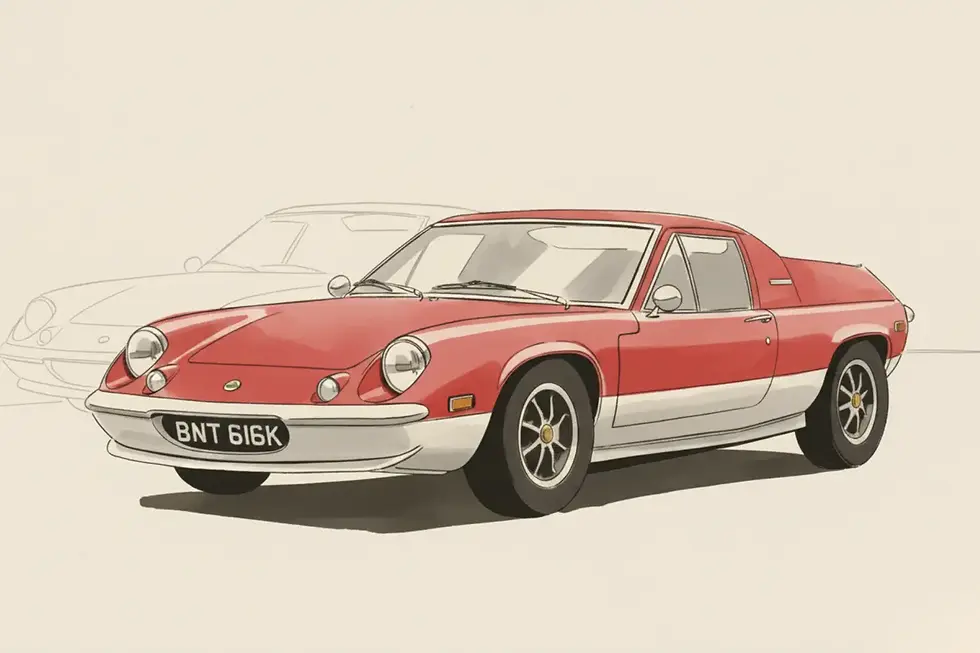Mid-engined car

Mid-engined car /mid-en-jind kar/ noun (countable)
A mid-engined car is a vehicle layout where the engine is located between the passenger compartment and the rear axle, placing the bulk of the car's weight within its wheelbase. This is the dynamically perfect layout that engineers dream of, but it makes a car useless for a trip to the supermarket. By placing the heavy, noisy engine where the rear seats ought to be, designers achieve a level of balance and agility that a front-engined car can only envy. It’s the hallmark of a serious supercar: brilliant for ten minutes on a perfect road, if you can keep it out of a ditch, and a maddening compromise the rest of the time.
The Full Story of the Mid-engined Car
While the fearsome, pre-war Auto Union Grand Prix cars had pioneered the layout, it was largely dismissed as a piece of needlessly complex German eccentricity after 1945. The sensible, proper way to build a racing car was with the engine at the front. This comfortable consensus was shattered by a small British company from Surbiton called Cooper Cars.
In the late 1950s, Charles and John Cooper were having great success with their small, light, mid-engined cars in junior formulas. In 1958, Stirling Moss drove one in the Argentine Grand Prix and, to the astonishment of all, won. The following year, Jack Brabham won the World Championship for Cooper. Enzo Ferrari, whose grand machines were built with operatic passion, was utterly humiliated by what he saw as common garage mechanics. The front-engined Grand Prix car was dead overnight, killed by a piece of British shed-based logic.
This success on the track created a desperate desire for the layout on the road. The engine, hot and noisy, now lived where your children or your shopping should be, a compromise deemed acceptable for the sake of superior handling. While Lamborghini set the template for the mid-engined supercar with the Miura, British firms brought the concept to the slightly-less-wealthy masses. The Lotus Europa offered the exotic layout to those who didn't mind feeling like they were being posted through a letterbox to get into their car.
The layout became such a symbol of performance that even a near-bankrupt British Leyland, in a moment of spectacular delusion, wheeled out the 1985 MG EX-E concept. It was a beautiful promise of a future they had absolutely no money to build, the equivalent of a tramp ordering a magnum of champagne. Today, the tradition is carried on by McLaren, who build nothing but mid-engined supercars, a direct legacy of the moment Cooper proved that perfect balance was better than brute force.
For The Record
What are the main advantages of a mid-engined layout?
The primary advantage is optimal weight distribution. Placing the engine in the middle of the car results in a low polar moment of inertia, which makes the car feel more agile and change direction more readily. It also improves traction under acceleration as weight shifts onto the driven rear wheels.
Are there any disadvantages?
Yes. Practicality is the most obvious one. Most mid-engined cars are strict two-seaters with luggage space seemingly designed for a single pair of socks. They can also be vicious little things at the limit of grip. Once a mid-engined car decides to spin, it does so with the speed and finality of a dropped dinner plate.
Is a rear-engined car the same thing?
No. A true mid-engined car has the engine ahead of the rear axle line. A rear-engined car, like a Porsche 911, has the engine located behind the rear axle line. This gives the 911 its unique, pendulum-like handling, a characteristic its devotees call "charming" and its detractors call "terrifying."
Why did it take so long for road cars to adopt the layout?
Because it is complex, expensive, and deeply impractical for a normal car. Packaging the engine, gearbox, and passengers together creates a lot of noise and heat directly behind the occupants' heads, which tends to spoil the romance of a long journey.
Was the Cooper F1 car the first ever mid-engined racer?
No. The pre-war Auto Union "Silver Arrows" were the true pioneers. However, after WWII, their technology was largely forgotten, and the front-engined layout was dominant. Cooper's success in the late 1950s was a "re-revolution" that permanently changed the sport.
